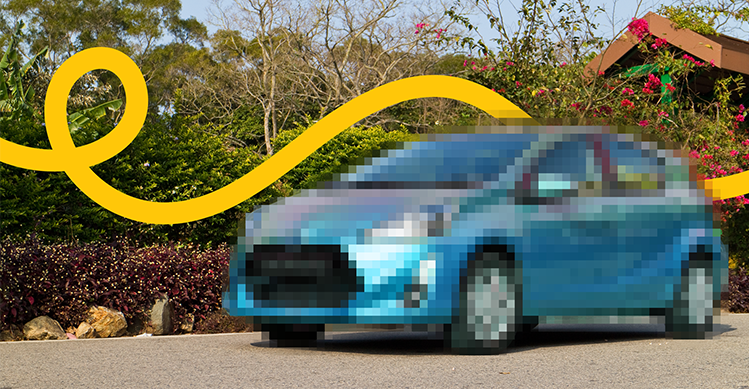If you're looking to go electric, here's the basics to help get you started.
EV: Electric Vehicle. This term is generally used for a fully electric vehicle or Plug-in Hybrid (PHEV).
BEV: Battery Electric Vehicle. This term is used to describe a fully electric vehicle, fuelled exclusively by electricity.
HEV: Hybrid Electric Vehicle. This term is used to describe a car with two engines - one powered by electricity and one by petrol or diesel (a combustion engine). Hybrid cars have small batteries that can't power the car by themselves. This means, for the most part, hybrids are run using a combination of electricity and petrol or diesel. The electric motor of a hybrid cannot be plugged in to charge, instead the vehicle uses regenerative braking and the combustion engine to recharge.
PHEV: Plug-In Hybrid Electric Vehicle. Much like a hybrid, PHEVs have both an electric motor and a combustion engine (petrol or diesel) to power the car. The difference is PHEVs have much larger batteries, enabling the car to go short distances using electric-only, and are plugged in to charge. They also have a combustion engine, so can go longer distances using both electric and petrol or diesel to power the car.
Range: This is the distance the car can travel using only electric power.
SoH: State of Health. This describes the overall condition of an EV battery and will provide the percentage of capacity the battery has compared to new. SoH is useful when buying a second-hand EV because battery health isn't solely dependent on the car's milage. For a Nissan Leaf, rather than SoH, you'll get a fraction of 12 to describe the capacity left. Battery capacity translates to range - the lower the capacity, the lower the range.
How far can you go in an EV before needing to charge it?
This depends on the car as there are significant variations between models. For a PHEV, the electric-only range can be as little as 15-20km or as much as 90km for newer models. Current BEVs can range from 170km (second-hand Nissan Leaf) to 484km (Hyundai Kona), with future models promising up to 800km (Tesla Cybertruck).
Is the promoted range on Electric Vehicles accurate?
The ranges EV manufacturers promote are reasonably accurate estimates. They are estimates because much like petrol or diesel vehicles, the electric-only range is dependent on things like speed, load, and driving terrain. So, if you've got a full car, your journey is mountainous, or if you drive faster than the average person, you may find your range is less than stated. Weather conditions also play a part, with batteries performing better in summer months than in winter.
How long does it take to charge an EV or PHEV?
Different EV, PHEVs and Hybrids take varying times to charge, so to give you a general idea of what you can expect, we'll look at New Zealand's most popular EV and PHEV. Charging times can also vary depending on the kind of charger used, so we'll cover that off too.
We haven't included hybrid cars because they don't need to be plugged in to charge.
BEV: The 2021 Tesla Model 3
The standard charger included with the Tesla Model 3 plugs into the New Zealand standard outlet (230/240V) and provides approximately 10km range per hour of charging. With a range of 567km, from 0-100% charge, you're looking at 57 hours. However, an overnight charge would give you ample range for everyday driving.
Tesla offers a 'Wall Connector' that can increase the charging capacity to 71km per hour of charging. This means charging from 0-100% takes approximately 8 hours.
Tesla Supercharging stations are available at public places throughout the country and can add 321km range in just 15mins.
PHEV: The 2022 Mitsubishi Outlander PHEV
Using the standard Level 2 at-home charger, you can charge the battery from 0-100% in approximately seven hours. A DC Fast Charging station (found at public charging sites) can give 80% charge in 25mins.
A full battery in a 2022 Mitsubishi Outlander PHEV gives you a range of approximately 84km using electric-only, after that the combustion engine kicks in and gives a fuel efficiency of 1.9L per 100km.
Charging your EV at home
You can charge an electric vehicle at your home using your standard outlet or a professionally installed charging station. Most EVs and PHEVs will come with a charger that plugs into the standard New Zealand outlet - it's important to get a qualified electrician to check if the outlet is safe to use.
Some EV brands will offer charging docks that can be installed by a professional into your home. These generally make charging safer and speedier but come at an up-front additional cost.
Charging your EV in public
There are over 1000 fast charging stations across the country, with some being offered free by electricity companies and shopping centres and others are pay-to-use. To find public charging stations, you can visit www.nzta.govt.nz/evroam or www.charge.net.nz/map.
What's best practice for battery charging?
It's best to charge your battery with your at-home charger and avoid fast charges where possible. When you're doing day-to-day commuting or run-around driving, don't charge your battery to full (80-90% is best) and try to avoid running the battery down too far.
If you've got your eye on an electric vehicle already, why not get a free, no obligation, quote online? It only takes 2 minutes - get started now
This article is intended to provide general information only, and should not be substituted for any legal, financial, or other professional advice. The information in this article is generally sourced from third-party websites and IAG New Zealand Limited does not guarantee or accept any liability for the accuracy of that information. Any references to third party websites in this article are not intended to constitute a recommendation or any endorsement by IAG New Zealand Limited.


